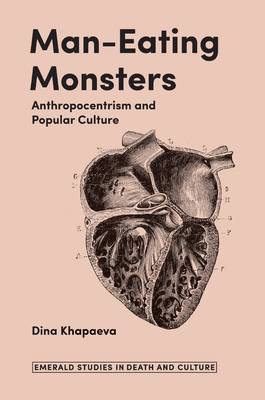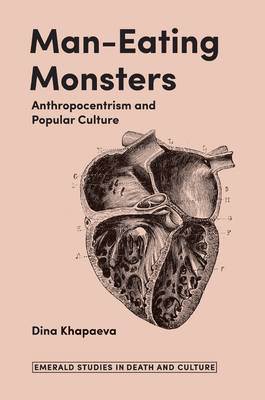
- Afhalen na 1 uur in een winkel met voorraad
- Gratis thuislevering in België vanaf € 30
- Ruim aanbod met 7 miljoen producten
- Afhalen na 1 uur in een winkel met voorraad
- Gratis thuislevering in België vanaf € 30
- Ruim aanbod met 7 miljoen producten
Zoeken
Man-Eating Monsters
Anthropocentrism and Popular Culture
€ 169,45
+ 338 punten
Omschrijving
What role do man-eating monsters - vampires, zombies, werewolves and cannibals - play in contemporary culture? This book explores the question of whether recent representations of humans as food in popular culture characterizes a unique moment in Western cultural history and suggests a new set of attitudes toward people, monsters, animals, and death.
This volume analyzes how previous epochs represented man-eating monsters and cannibalism. Cultural taboos across the world are explored and brought into perspective whilst we contemplate how the representations of humans as commodities can create a global atmosphere that creeps towards cannibalism as a norm.
This book also explores the links between the role played by the animal rights movement in problematizing the difference between humans and nonhuman animals. Instead of looking at the relations between food, body, and culture, or the ways in which media images of food reach out to various constituencies and audiences, as some existing studies do, this collection is focused on the crucial question, of how and why popular culture representations diffuse the borders between monsters, people, and animals, and how this affects our ideas about what may and may not be eaten.
This volume analyzes how previous epochs represented man-eating monsters and cannibalism. Cultural taboos across the world are explored and brought into perspective whilst we contemplate how the representations of humans as commodities can create a global atmosphere that creeps towards cannibalism as a norm.
This book also explores the links between the role played by the animal rights movement in problematizing the difference between humans and nonhuman animals. Instead of looking at the relations between food, body, and culture, or the ways in which media images of food reach out to various constituencies and audiences, as some existing studies do, this collection is focused on the crucial question, of how and why popular culture representations diffuse the borders between monsters, people, and animals, and how this affects our ideas about what may and may not be eaten.
Specificaties
Betrokkenen
- Uitgeverij:
Inhoud
- Aantal bladzijden:
- 136
- Taal:
- Engels
- Reeks:
Eigenschappen
- Productcode (EAN):
- 9781787695283
- Verschijningsdatum:
- 11/11/2019
- Uitvoering:
- Hardcover
- Formaat:
- Genaaid
- Afmetingen:
- 155 mm x 231 mm
- Gewicht:
- 299 g

Alleen bij Standaard Boekhandel
+ 338 punten op je klantenkaart van Standaard Boekhandel
Beoordelingen
We publiceren alleen reviews die voldoen aan de voorwaarden voor reviews. Bekijk onze voorwaarden voor reviews.







